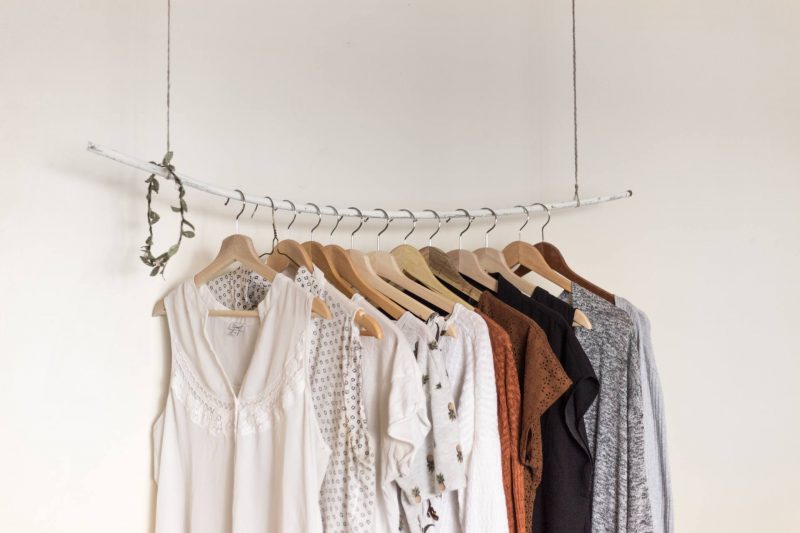As we’re all aware, retailers and manufacturers are trying to become eco-friendly and those operating in the fashion industry are no different. From adapting their manufacturing methods to varying the materials that they use, what is the industry doing to reduce their carbon footprint? Trilogy Stores, retailers of premium brands such as AG Jeans, investigate.
The main issue
Fashion designers and manufacturers have found themselves under scrutiny over the past decade for their large carbon footprint. The players in the industry should be working together to improve their production process and become more environmentally conscious. Currently, less than 1% of the material used to make clothing is then recycled into new clothing. There are other worrying facts that are associated with the industry too:
The estimated cost to the UK economy of landfilling clothing and household textiles is £82m per year. People aren’t wearing their garments as much as they used to — the average number of times a piece of clothing is worn before it’s no longer used has decreased by 36% in 15 years. One kilogram of fabric generates an average of 23 kilograms of greenhouse gases.
Can it be solved?
There are alternative materials available that could make the fashion industry more eco-conscious. Hemp for example, is a plant-based material and is one of the most versatile out there. It’s currently used for cleaning products, building materials and has been found to be stronger than the commonly used cotton. It’s good for the environment too as it requires less pesticides and herbicides than cotton needs to grow.
Companies that make up the industry must make themselves more transparent too. This can push them to become more environmentally friendly as consumers and governing officials can see their supply chain and identify any areas that could be improved. Fashion Revolution have their own index, The Fashion Transparency Index (FTI), that ranks how much information the largest 100 global fashion businesses reveal about their social and environmental policies. In 2017, they discovered that 31 brands now disclose a list of their suppliers for all to see — an increase from five in 2016.
Another material that can be used to create garments is soy. Unlike silk and cashmere, animals aren’t involved in the production of the material and it is machine washable and wrinkle resistant — a plus for fashion consumers.
When retailer H&M sponsored a €1 million competition that asked for suggestions on making the industry more environmentally friendly, this is what was proposed:
Polyester-eating microbes — this discovery of a new type of microbe is able to eat an old shirt and break the polymers down so that they can be sold back to manufacturers that work with polyester. Recycling food waste — this innovation involved turning by-products of citrus fruits into raw materials that can be used to create clothing. Recycling cotton — using an environmentally friendly solvent, old cotton clothing is dissolved and a new material is created that can be spun into new fibres.
How to shop sustainably
There are some designers and brands that make a conscious effort to reduce their carbon footprint and greenhouse gases.
AG Jeans
AG Jeans are a denim brand that have adapted their manufacturing process to make it more eco-friendly. They use technological advancements such as Ozone Technology which reduces water consumption by 50% and decreases the need for chemicals and energy when creating clothing. They also use sustainable fibres such as Tencel® and Modal® which are entirely biodegradable and therefore don’t have long lasting effects on the environment as other materials do. They also use heat-saving equipment which recycles heat from dryers to reduce laundry energy consumption by up to 46% according to the brand.
Stella McCartney
Stella’s brand is entirely free of animal products. In fact, hers was the first luxury brand that was anti-leather and anti-fur, with many other brands following in her footsteps. Her brand prides itself on its commitment to leading ‘a responsible, honest and modern company’. Her products are leading the way in sustainable fashion. Over 50% of her womenswear is sustainable and she has developed jackets and sneakers that were made from 100% recycled polyester.
Almasanta
Almasanta offer a collection of sustainable brands from all countries. They have created a platform where eco-conscious fashion customers can browse various garments in one place. Brands are all made from natural fabrics and long-lasting products. They are very eco-aware and only stock products that guarantee a reduced use of energy and water, they also send their products out in 100% recycled packaging.
Right now, we are far from a sustainable fashion industry. But retailers must start small! Even if each retailer made a small environmentally-focused change, we’d see a huge difference. With advancements in technology with eco-friendly clothing materials, who knows what the future holds?

